Palazzo Massimo is home to one of the world’s most important collections of Roman antiquities. Here you can admire some world-famous statues, amazing mosaics, colorful frescoes, ancient jewelry and an important collection of coins.
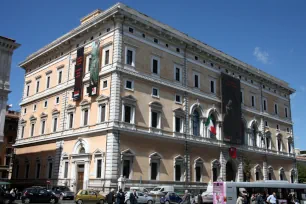
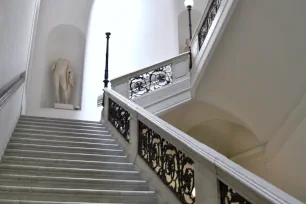
The palace is one of four sites managed by the Museo Nazionale Romano, the National Roman Museum. The museum’s other branches are housed in the Palazzo Altemps, the Baths of Diocletian and the Crypta Balbi.
The Building
The imposing palace that houses the fabulous collection of ancient art was built in 1883-1887 at the site of the former Villa Montalto-Peretti, which was once owned by Pope Sixtus V and later acquired by the Massimo family. The building was designed by Camillo Pistrucci in a style reminiscent of the late Renaissance, and served as a Jesuit college until 1960. The palace was then purchased by the Italian State, and in the 1980s-1990s it was renovated and transformed into a museum.
Palazzo Massimo overlooks Piazza dei Cinquecento; you can see both the Termini Station and the Baths of Diocletian from inside the building.
The Museum Collection
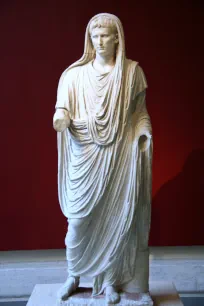
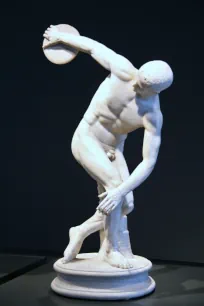
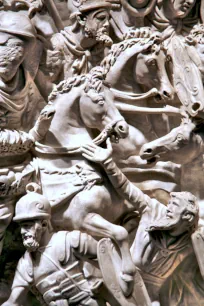
The museum’s galleries are spread over four floors. On the ground and first floor you can see a fabulous collection of Greek and Roman sculpture; the top floor shows mosaics and frescoes that once embellished Roman residences, and the basement holds a collection of coins and jewelry.
Sculpture
Two floors are dedicated to Greek and Roman sculptures excavated in Rome. The oldest statues are on the ground floor, and several of these are either Greek or Roman imitations of Greek models. The Greek statue of a Wounded Niobe (5th century BC) and two Hellenistic nude bronze statues from around the second to first century BC are among the most important. On the same floor are also several rooms dedicated to the Republican and early Imperial period, where you can find a famous statue of Emperor Augustus portrayed as Pontifex Maximus (highest priest).
The first floor shows the evolution of Roman sculpture during the height of the Roman Empire, including many statues and busts of emperors. Some of the most famous pieces on this floor include two Roman versions of the Discobolus (discus thrower), the Bronze Dionysus, the Squatting Aphrodite and the Sleeping Hermaphroditus.
Other highlights on this floor include the bronze animal decorations of ships found at Lake Nemi. The ships were built in the first century AD on the order of emperor Caligula. Also not to miss is the collection of elaborately decorated sarcophagi, and in particular the Sarcophagus of Portonaccio, which is lively decorated with relief sculpture depicting battle scenes between Roman soldiers and barbarians.
Mosaics and Frescoes
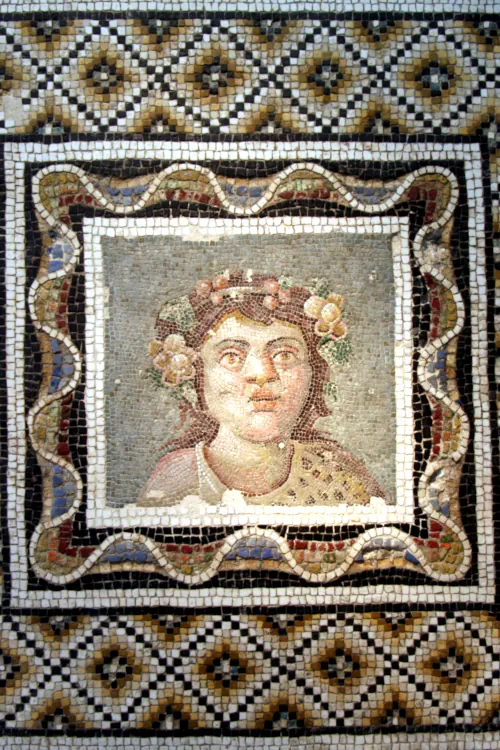
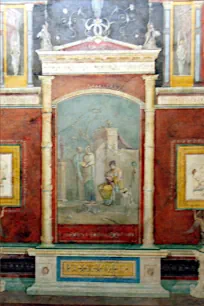
On the second floor, you can see how the Romans used to decorate their residences. Some of the most beautiful mosaic floors and frescoed walls ever found in Rome are shown here.
The many mosaics show an incredible variety in designs – from geometric to realistic – and subjects – from mythological scenes to everyday scenes and objects. Some are so finely crafted that they look like paintings.
Just as impressive are the wall paintings that are shown in recreated rooms that give us a good idea of what a room of a villa in imperial Rome looked like. The decorations were often thematic, such as in the old Villa of Farnesina, where the parents’ bedroom was painted red with erotic decorations while the children’s room is brightly painted in white with few decorations. You can see another example in the recreated rooms of the Villa of Livia, wife of Emperor Augustus. The walls of the villa’s dining room are decorated with realistic paintings of plants, birds and a blue sky so that visitors would get the impression that they were eating in a garden.
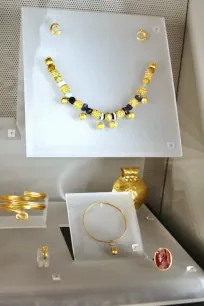
Coins and Jewels
The basement holds the museum’s impressive numismatic collection, with coins from the Antiquity to today. The coins are displayed in chronological order, from bronze coins minted in the fourth century BC to today’s euro coins.
Also in the basement you find a collection of luxury items and jewelry such as rings, bracelets and necklaces. Many of these items were found in ancient graves, so it’s not that much of a surprise to see a mummy here – even if it’s the mummy of an eight-year-old child. She was found in Rome in a sarcophagus together with her jewelry and an ivory doll, which are also displayed here.

